
Author Stephen Kinzer discusses his book, “Overthrow: America’s Century of Regime Change from Hawaii to Iraq.” In it, Kinzer writes that over 110 years, the United States has deployed its power to gain access to natural resources, stifle dissent and control the nationalism of newly independent states or political movements. [includes rush transcript]
We play Part II of our interview with former New York Times foreign correspondent, Steve Kinzer. Kinzer’s new book is titled, “Overthrow: America”s Century of Regime Change from Hawaii to Iraq.” In it, he examines how the United States has thwarted independence movements in Cuba, Puerto Rico, the Philippines and Nicaragua; staged covert actions and coups d’etat in Iran, Guatemala, South Vietnam and Chile; and invaded Grenada, Panama and Afghanistan and Iraq.
Kinzer argues that over 110 years, the United States has deployed its power to gain access to natural resources, stifle dissent and control the nationalism of newly independent states or political movements. I interviewed Kinzer in Chicago last month. This is Part II of our conversation.
- Stephen Kinzer, author of “Overthrow: America’s Century of Regime Change from Hawaii to Iraq.” He is a former New York Times foreign correspondent and author of several books, including “All the Shah’s Men” and “Bitter Fruit.”
Transcript
AMY GOODMAN: We turn to part two of our interview with the former New York Times foreign correspondent, Stephen Kinzer. Kinzer’s new book is called Overthrow: America’s Century of Regime Change from Hawaii to Iraq. I interviewed Kinzer in Chicago a few weeks ago. We talked about a number of coups the U.S. was involved with, from Hawaii to Iran. We started in part two with Guatemala, a year after the U.S.-backed coup in Iran.
STEPHEN KINZER: The coup in Guatemala that the United States carried out in1954 was another one of those that not only cast a whole part of the world into instability, but led to the intensification of anti-American sentiment, not only in Guatemala, but throughout Latin America and beyond. Guatemala had become independent from Spain, with the rest of Central America, in the 1820s. Like most of the rest of Central America, it had been under a series of tyrants up until 1944. There was then a revolution. And for ten years, Guatemala was a functioning democracy.
In Guatemala, economic life was totally dominated by one American company: the United Fruit Company. It was a uniquely powerful company, had great ties in Washington. Many of the senior people in the Eisenhower administration were either stockholders or former board members or otherwise closely connected with United Fruit. Now, in Guatemala, not only was United Fruit producing most of that country’s banana exports, but it also owned more than half a million acres of land, some of the richest land in the country, that it didn’t use. It was just holding this land for some potential future use.
Now, President Arbenz, who was in power in Guatemala in the early 1950s, wanted to take that land and use it to divide up among starving Guatemalan peasants. And with a democratic vote of the elected Guatemalan congress, a land reform law was passed that required the United Fruit Company to sell its unused land to the Guatemalan government at the price that United Fruit had declared on its last year’s tax returns as the value of that land. Well, naturally the fruit company went crazy when they got this request and said, “Of course, nobody puts down the real value of the land on their tax returns, and really the price should be about ten times higher than that.” But the government said, “I’m sorry. This is the way you have, yourself, valued the land, and so we’re insisting that you sell it to us at this price.”
Well, this is what set the United Fruit Company in operation in Washington. It persuaded the Eisenhower administration that the Arbenz government would not have been taking steps like this, would not have launched a land reform program, would not have tried to take land from the United Fruit Company, if it were not fundamentally anti-American. In addition, there was the overlay of the Cold War. So the United Fruit Company was able to persuade the U.S. government that not only was this government hostile to an American corporate interest in Guatemala, but it was undoubtedly a tool of the Kremlin which was, as Americans then thought, working all over the world to undermine American interests.
Now, during the run-up to the Guatemala coup, the Brazilian ambassador actually came in to see Secretary of State John Foster Dulles and asked him if he was sure, if he had proof that the Soviets were manipulating Guatemala, and Dulles very frankly answered, “We do not have that proof, but we are proceeding as if it must be so.” So the United States with relative ease overthrew the government of Guatemala.
AMY GOODMAN: And just for one minute, John Foster Dulles, the Secretary of State, had represented United Fruit as a corporate lawyer.
STEPHEN KINZER: Dulles was a perfect example of the tremendous influence that United Fruit had in Washington. The Secretary of State was the former attorney for the United Fruit Company. So when the United Fruit Company was aggrieved, he felt aggrieved. And as a militant anti-communist, he also assumed that this was part of a communist conspiracy. We now know from documents that have been released in Moscow that the Soviets didn’t even know Arbenz and Guatemala existed, had not the slightest interest in that situation.
Now, what was the aftermath of the Guatemalan coup? We imposed a dictatorship. Within a few years, that dictatorship provoked a rebellion. That led to a 30-year civil war, which was actually just a long series of massacres in which hundreds of thousands of Guatemalans were killed. It was such a horrific period, and I covered part of it as a correspondent, that had someone else been doing it in some other part of the world, we certainly would have denounced it as genocide.
Now, this leads to another pattern that I see in so many of these coups. The crucial moment comes right after we overthrow the government. Then we have to decide who’s going to be the new guy. Who do we want to put in as the leader of this country? We want a person who fulfills two conditions: first of all, somebody who’s popular, who can stay in power and is supported by his people; and secondly, someone who will do what we want. We didn’t overthrow the government just to have someone we don’t like in power. So, we quickly realize that you can’t have both. You cannot have somebody who’s popular and also somebody who will do the bidding of the United States. A popular leader will place the interests of his own country first, ahead of the interests of the United States. That’s not why we intervene.
So, we choose the other route: we choose someone who is not popular but will do what we want. What does that mean? He has to rule with increasing repression, because people don’t like him. The United States then has to support him, often militarily. That means the opposition to the dictator also becomes opposition to the United States. Resentment festers. Ultimately, there’s an explosion, and we wind up with a regime far more tyrannical than the one we originally intervened to overthrow.
AMY GOODMAN: And the Guatemalan coup of 1954, the U.S. overthrowing the democratically elected President Arbenz, came one year after the U.S. overthrew Mossadeq in Iran.
STEPHEN KINZER: After Mossadeq was overthrown in Iran, the C.I.A. agent who carried out that coup, Kermit Roosevelt, actually the grandson of Teddy Roosevelt, who was an early American intervener, came back to the White House to brief President Eisenhower and Secretary Dulles and other members of the foreign policy team. And Kermit Roosevelt later wrote about this episode. He said, “As I was carrying on my briefing, I looked over at John Foster Dulles, and he had a big smile on his face, and he seemed to be purring like a giant cat.” Now, Roosevelt did not know what Dulles was thinking, but I think I know what he was thinking. I believe he was thinking, “This is great! Now I’m listening to the news of how easy it was to overthrow the government in Iran. It means that we have a whole new tool now, a whole new way to overthrow governments.”
AMY GOODMAN: And with Iran, it was for British Petroleum?
STEPHEN KINZER: With Iran, the sin that Prime Minister Mohammed Mossadeq committed, that ultimately — that originally set this intervention in motion was nationalizing the oil company. So, actually, these two situations were very similar. Mossadeq in Iran and Arbenz in Guatemala were nationalist leaders, not responding to any Soviet influence, who, responding to their own people’s legitimate demands, decided that the wealth from their own natural resources should go to benefit their own people, rather than the Americans, the British or outside powers.
AMY GOODMAN: Let’s stay in Latin America, going from 1954 to 1973, to another September 11th. You have a rare picture of Henry Kissinger shaking hands with the man who overthrew the democratically elected leader: Pinochet. Can you talk about what happened in Chile?
STEPHEN KINZER: Chile is another one of those cases where we overthrew a leader who in many ways embraced and represented American principles, and we replaced him with a tyrant who despised everything the United States stands for. Allende was a democratically elected leader, and although he was a self-proclaimed Marxist, he had been within the Chilean democratic system all his life. He had been president of congress, and he had been a senator. He was fully integrated into the Chilean democracy and certainly would have left office at the end of his term, probably to be replaced by someone more conservative. But the United States couldn’t wait for that. It’s a reflection of our impatience, our insistence that we get what we want not later, but now.
In Chile, just as in Guatemala, and just as in Iran, the great natural resource was controlled by foreign corporations. In Chile that resource was copper. And the two giant American corporations operating there were Kennecott and Anaconda. Allende moved to nationalize the Chilean holdings of those two companies. And those two companies, along with other companies like I.T.T. that were active in Chile panicked at this. They immediately went to the White House. One of the leading Chilean businessmen and the owner of the largest newspaper in Chile had a private audience with Henry Kissinger. Nixon was immediately set into motion. He became very upset about the prospect of Allende coming to power.
And this is another example of how the motivation morphs. If Allende had not bothered Kennecott, Anaconda and other American companies, or threatened to bother them, they never would have protested to the White House. But once they did protest, the White House embraced their cause and transformed it a little bit. The U.S. did not intervene in Chile directly, as it would have said, to protect American companies, but the fact that a government was bothering our companies led us to believe that that government must also be strategically and politically opposed to the United States. So that then became the motivation that pushed Nixon and Kissinger, who were not real defenders privately of American business, into action for what they perceived were a combination of economic and political reasons. But that intervention was carried out in a covert way, and it wasn’t until years later that the very rich documentation came out to show how completely it was a made-in-Washington operation.
AMY GOODMAN: And that picture?
STEPHEN KINZER: The picture of Pinochet with Kissinger is wonderful. Shortly after the coup, about a year or two later, Secretary of State Kissinger arrived in Chile to address a meeting of the Organization of American States. In that speech, he had to make some pro forma references to human rights and the American interest in promoting human rights. But the day before he made the speech, he went to visit Pinochet privately. We now have the transcript of that meeting. And he essentially told Pinochet, “I’m going have to say some things about human rights tomorrow, but that doesn’t apply to you. Don’t take that seriously. We support you, and we’re glad that you’re here.” So, the public face of the U.S. policy toward Chile even then was very different from what we were directly telling Pinochet in private.
AMY GOODMAN: And speaking about Spanish-speaking countries, how about going back in time to Puerto Rico?
STEPHEN KINZER: Puerto Rico is another very interesting case, because Puerto Rico was a Spanish possession. But during 1898, the new liberal regime in Spain offered Puerto Rico a tremendous amount of autonomy, which the Puerto Ricans greatly embraced. They were not rebelling against Spanish colonial rule the way the Cubans were. And they were offered an amount of autonomy that was greater than the British gave to Canada. They actually had an election. They produced a Puerto Rican domestic government, which was going to be able to have large control over the direction of Puerto Rican policy within the framework of Spanish rule. They had very visionary leader, Luis Munoz Rivera, who was to be the new prime minister of Puerto Rico.
His government lasted only about a week, when the U.S. invaded on the way to Cuba, more or less. The Spanish-American War was not aimed at Puerto Rico. It was never intended to bring Puerto Rico into the U.S., but Puerto Rico was just grabbed because it happened to be there, it was available, it was lovely, it was on some sea routes that the U.S. wanted to control. So the U.S. stepped in and essentially crushed the self-governing home-rule government of Puerto Rico. It placed Puerto Rico under military rule.
And very quickly, the first thing that happened in Puerto Rico over the next few years was that the small coffee farms were taken over and transformed into large sugar plantations. Coffee in Latin America is sometimes called the poor man’s crop, because you can grow it on just a very small plot, but you can’t grow sugar that way. So, essentially large numbers of Puerto Ricans were dispossessed to make way for four big American sugar companies, and Puerto Rico went from being a self-governing rising very confident new nation in 1898 to the status of a colony, and a greatly impoverished one, in the decades that followed.
AMY GOODMAN: And so, what happened in these ensuing years, for people to understand?
STEPHEN KINZER: In Puerto Rico, I think you can argue that in the long run things could have gone a lot worse. This was one intervention where the U.S., after a long period of time, decided to take responsibility for developments in the country. And that was for a very particular reason. It had a lot to do with the rise of Fidel Castro in Cuba. Suddenly, the idea of the U.S. having a miserably poor colony in the Caribbean didn’t look so good. It was a bad contrast to Cuba. So it wasn’t until that period in the 1950s and 1960s that the U.S. began to try to develop Puerto Rico and pull it up from the underdevelopment into which we had cast it for the first half of the 20th century.
AMY GOODMAN: We’re talking to Stephen Kinzer. He is author of the book, Overthrow: America’s Century of Regime Change from Hawaii to Iraq. Let’s talk about Grenada and Panama. What happened, as we see Grenada, Panama, and then we move on to, well, today, Iraq?
STEPHEN KINZER: I place the American history regime change in three chronological groups. The first set of our overthrows of foreign governments came in the late 19th, early 20th century. That was the period when we could openly invade foreign countries. In the Cold War, we couldn’t do that anymore, because we were afraid there might be a counter-reaction from the Soviet Union. That’s why we had to use the C.I.A. to overthrow governments covertly. But with the fading of the Soviet Union, we didn’t have to do that anymore. We could go back to plan A, so to speak, which was invading governments.
Now, the Grenada situation started when a radical clique of ultra-militants within Grenada rose up and assassinated their own political leaders. A small group of a couple of hundred of American medical students were also on Grenada. Now, the U.S. could probably have evacuated those students quite easily. In fact, the new regime was eager to be rid of them, in order not to give a pretext to the United States.
But there was a larger global political context in which the Grenada operation happened. The United States was still recovering from the humiliation of the loss of Vietnam. And actually the very weekend before the Grenada invasion was launched was the weekend when the U.S. Marine barracks in Lebanon was blown up, with the loss of the lives of more than 200 Marines. The U.S. had been feeling very impotent in the world, and President Reagan had come to power with the promise that he would make America stand tall again. So the possibility of peacefully resolving the Grenada crisis, which is what some of the regional leaders wanted to do — they wanted a blockade around Grenada, which has no natural resources, doesn’t even have water or gasoline or anything, so it would have been very susceptible to some kind of regional pressure. This did not appeal to the United States. Reagan and his aides immediately realized this as a chance for the U.S. to score a big military victory, something we hadn’t had for many, many years.
Now, the whole population of Grenada can fit into the Rose Bowl. It’s a very, very small place. That’s why, after the invasion, we had a spectacular opportunity at a very, very low price to transform Grenada into the garden spot of the Caribbean and show that something good could come after American interventions. The cost of that would have been so pitifully low — it’s 100,000 or 120,000 people — but immediately, instead of doing that, we turned our back on Grenada, and we went on to the next project. But it did serve the purpose of the Reagan administration, which was to give America a victory, even though it was a victory over a pitifully small island, and to be able to show Marines doing something positive. That, I think, was the real reason we carried out that operation.
AMY GOODMAN: And Panama, the picture you have of President Bush, Sr., that is with Noriega, who’s now in a prison in the United States?
STEPHEN KINZER: We intervened and invaded Panama in order to overthrow General Noriega, but what I discovered upon working on my Panama chapter is that Noriega had been on the payroll of the C.I.A. for 30 years. He committed a number of sins. Part of it was his involvement in the drug trade, although the U.S. government and the C.I.A. had been completely aware of this for years. He was leading Panama out of the U.S. orbit. He was interfering with American plans to carry out the Contra war in Central America. You’ll remember the Contadora process that was part of the peace process in Central America. Contadora is actually an island in Panama, so it was there that some of this peace process that undermined the Contra project took place.
In addition, Noriega could have been overthrown in a coup that Panamanians were carrying out just a few days before our invasion. And the Panamanian general who was carrying out this coup informed the U.S. — he only asked the U.S. to block a couple of roads to prevent Noriega’s loyalists from coming into Panama. And that coup would have succeeded, but we didn’t support it, and the American commander later explained why. He said that coup would have only overthrown Noriega. It would have left the very nationalist Panamanian defense force intact. We didn’t only want to get rid of Noriega. We wanted to get rid of the entire military institution which had fallen away from American influence and become a reflection of some nationalist Panamanian aspirations. And that wasn’t a successful outcome of the Panamanian intervention.
AMY GOODMAN: We only have a minute left. But you end with, of course, Iraq today.
STEPHEN KINZER: When President Bush practiced the speech that day about two years ago, in which he announced the invasion of Iraq, he did it in a room in the White House called the Treaty Room. That was the very same room in which the Spanish document of surrender that gave the U.S. control over Cuba and Puerto Rico had been signed more than a hundred years earlier. And on the wall in that room is a picture of that episode, the signing of that treaty. That picture is dominated by the large figure of President William McKinley, so he was symbolically looking over Bush’s shoulder when Bush was reading the speech announcing the invasion of Iraq. And no one would have understood better than President McKinley that Bush was not leading the U.S. into the regime change era. The U.S. had been in that era for more than a century.
AMY GOODMAN: Stephen Kinzer, author of Overthrow: America’s Century of Regime Change from Hawaii to Iraq_. You can visit our website to hear or see “part one”:_SLASHLINK__ of this interview.

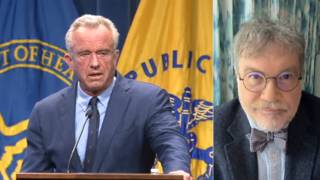
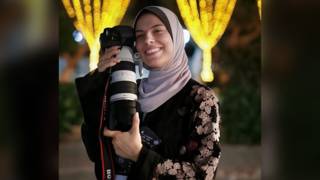
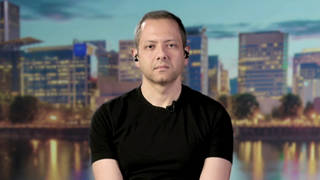
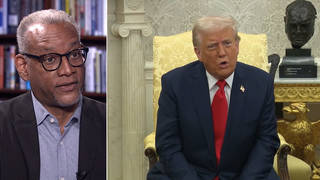
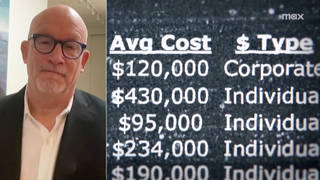
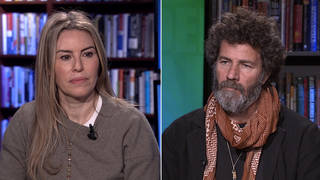
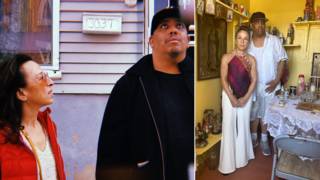



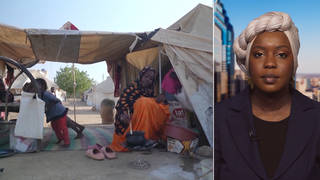
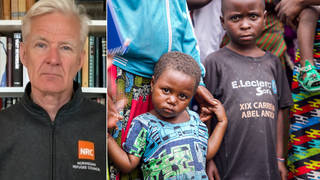
Media Options